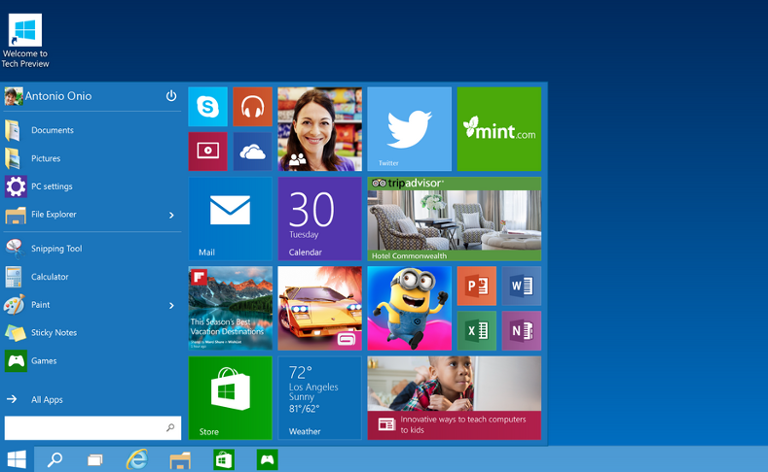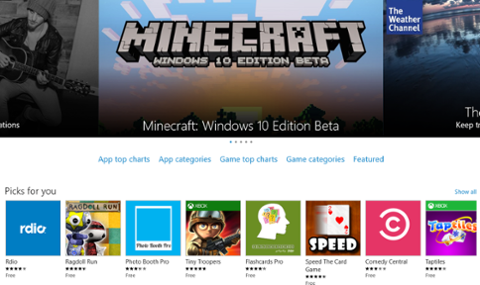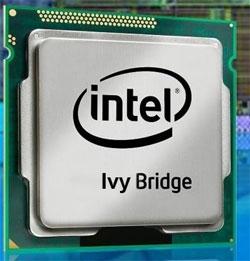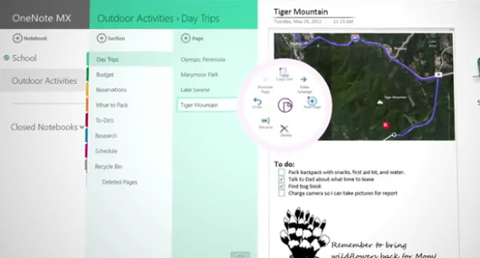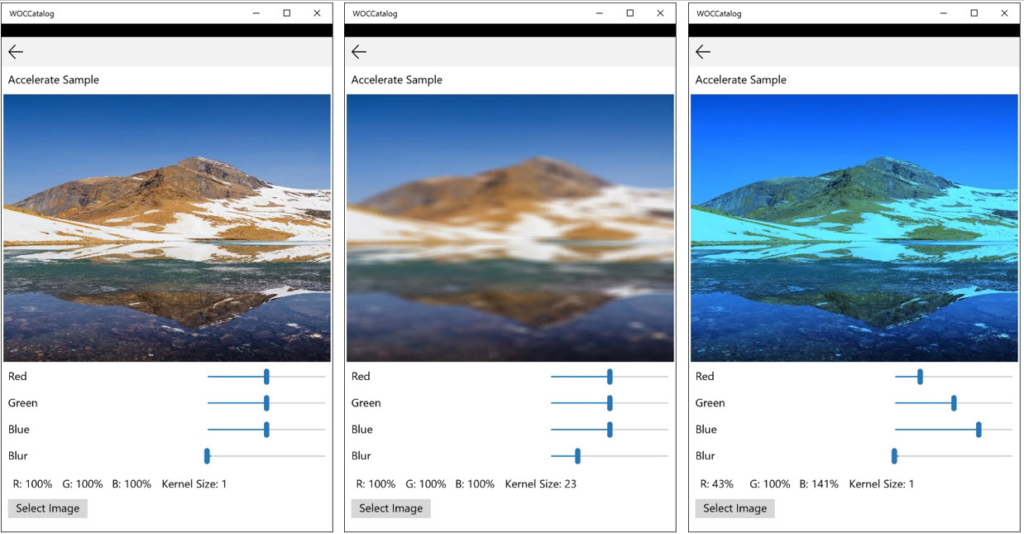 Over the past several years, Apple’s App Store has built up an impressive collection of software—over 2 million apps, according to some counts. Meanwhile, Microsoft has spent those same years attempting to convince developers to build for the Windows platform. While major corporations continue to produce games and productivity software exclusively for Windows, the developers who routinely build software for Google Android and Apple iOS haven’t rushed to port their products to the Windows environment. With Windows 10, Microsoft is making another bid for those developers. First, Windows 10 is built to run on a variety of screens and form-factors, from high-powered desktops down to tablets and smartphones. Second, Microsoft and Intel are contributing code to a “bridge” that will (at least in theory) allow developers to port apps built in Objective-C to Windows 10 devices running on Intel chips. Code for the iOS bridge is available on GitGub. Intel recently contributed what it calls the “Accelerate framework,” which it described in a blog posting as containing “C APIs for vector and matrix mathematics, DSP, and image processing.” Those APIs are vital for applications with “scientific computing needs, including audio and image filters.” (You can see an example of its output above.) The Accelerate framework joins other Intel contributions to the project, including BLAS APIs, Accelerometer APIs, Gyroscope APIs, and so on. At one point, Microsoft also had plans to build an Android bridge. In February, however, the company dropped those plans. “For those developers who spent time investigating the Android Bridge, we strongly encourage you to take a look at the iOS Bridge and Xamarin as great solutions,” read the company’s official blog posting at the time. Will a well-built bridge convince iOS developers to port their products to Windows 10? Even with bridging software in place, expanding an app to a new platform takes a good deal of time, effort, and money; developers are likely to adopt a “wait and see” attitude.
Over the past several years, Apple’s App Store has built up an impressive collection of software—over 2 million apps, according to some counts. Meanwhile, Microsoft has spent those same years attempting to convince developers to build for the Windows platform. While major corporations continue to produce games and productivity software exclusively for Windows, the developers who routinely build software for Google Android and Apple iOS haven’t rushed to port their products to the Windows environment. With Windows 10, Microsoft is making another bid for those developers. First, Windows 10 is built to run on a variety of screens and form-factors, from high-powered desktops down to tablets and smartphones. Second, Microsoft and Intel are contributing code to a “bridge” that will (at least in theory) allow developers to port apps built in Objective-C to Windows 10 devices running on Intel chips. Code for the iOS bridge is available on GitGub. Intel recently contributed what it calls the “Accelerate framework,” which it described in a blog posting as containing “C APIs for vector and matrix mathematics, DSP, and image processing.” Those APIs are vital for applications with “scientific computing needs, including audio and image filters.” (You can see an example of its output above.) The Accelerate framework joins other Intel contributions to the project, including BLAS APIs, Accelerometer APIs, Gyroscope APIs, and so on. At one point, Microsoft also had plans to build an Android bridge. In February, however, the company dropped those plans. “For those developers who spent time investigating the Android Bridge, we strongly encourage you to take a look at the iOS Bridge and Xamarin as great solutions,” read the company’s official blog posting at the time. Will a well-built bridge convince iOS developers to port their products to Windows 10? Even with bridging software in place, expanding an app to a new platform takes a good deal of time, effort, and money; developers are likely to adopt a “wait and see” attitude. Intel Adding Code to Microsoft's iOS Bridge
 Over the past several years, Apple’s App Store has built up an impressive collection of software—over 2 million apps, according to some counts. Meanwhile, Microsoft has spent those same years attempting to convince developers to build for the Windows platform. While major corporations continue to produce games and productivity software exclusively for Windows, the developers who routinely build software for Google Android and Apple iOS haven’t rushed to port their products to the Windows environment. With Windows 10, Microsoft is making another bid for those developers. First, Windows 10 is built to run on a variety of screens and form-factors, from high-powered desktops down to tablets and smartphones. Second, Microsoft and Intel are contributing code to a “bridge” that will (at least in theory) allow developers to port apps built in Objective-C to Windows 10 devices running on Intel chips. Code for the iOS bridge is available on GitGub. Intel recently contributed what it calls the “Accelerate framework,” which it described in a blog posting as containing “C APIs for vector and matrix mathematics, DSP, and image processing.” Those APIs are vital for applications with “scientific computing needs, including audio and image filters.” (You can see an example of its output above.) The Accelerate framework joins other Intel contributions to the project, including BLAS APIs, Accelerometer APIs, Gyroscope APIs, and so on. At one point, Microsoft also had plans to build an Android bridge. In February, however, the company dropped those plans. “For those developers who spent time investigating the Android Bridge, we strongly encourage you to take a look at the iOS Bridge and Xamarin as great solutions,” read the company’s official blog posting at the time. Will a well-built bridge convince iOS developers to port their products to Windows 10? Even with bridging software in place, expanding an app to a new platform takes a good deal of time, effort, and money; developers are likely to adopt a “wait and see” attitude.
Over the past several years, Apple’s App Store has built up an impressive collection of software—over 2 million apps, according to some counts. Meanwhile, Microsoft has spent those same years attempting to convince developers to build for the Windows platform. While major corporations continue to produce games and productivity software exclusively for Windows, the developers who routinely build software for Google Android and Apple iOS haven’t rushed to port their products to the Windows environment. With Windows 10, Microsoft is making another bid for those developers. First, Windows 10 is built to run on a variety of screens and form-factors, from high-powered desktops down to tablets and smartphones. Second, Microsoft and Intel are contributing code to a “bridge” that will (at least in theory) allow developers to port apps built in Objective-C to Windows 10 devices running on Intel chips. Code for the iOS bridge is available on GitGub. Intel recently contributed what it calls the “Accelerate framework,” which it described in a blog posting as containing “C APIs for vector and matrix mathematics, DSP, and image processing.” Those APIs are vital for applications with “scientific computing needs, including audio and image filters.” (You can see an example of its output above.) The Accelerate framework joins other Intel contributions to the project, including BLAS APIs, Accelerometer APIs, Gyroscope APIs, and so on. At one point, Microsoft also had plans to build an Android bridge. In February, however, the company dropped those plans. “For those developers who spent time investigating the Android Bridge, we strongly encourage you to take a look at the iOS Bridge and Xamarin as great solutions,” read the company’s official blog posting at the time. Will a well-built bridge convince iOS developers to port their products to Windows 10? Even with bridging software in place, expanding an app to a new platform takes a good deal of time, effort, and money; developers are likely to adopt a “wait and see” attitude. 